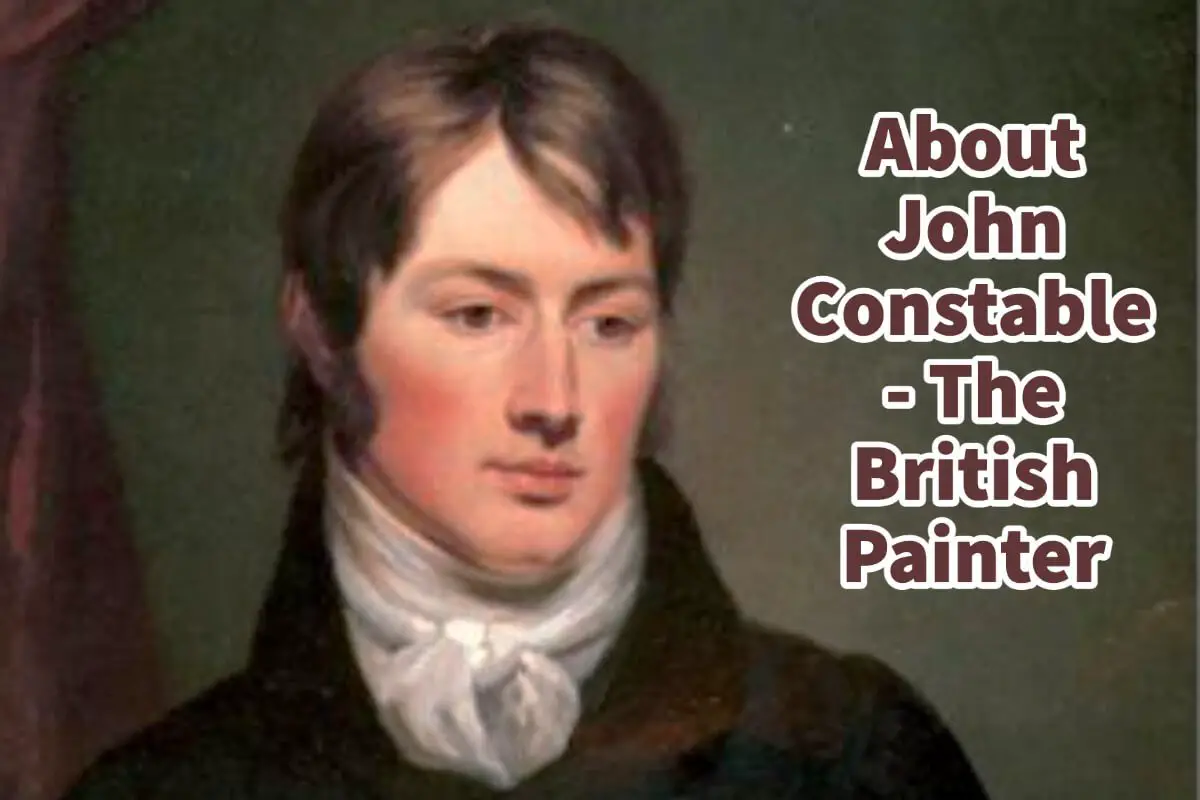If you see a 19th-century painting of the English countryside, chances are it is a painting by the English artist John Constable.
John Constable was an important 19th-century British painter best known for his landscaper, particularly his painting of clouds and skies. He is best known for his paintings of the British countryside, particular areas where he or his family had visited or lived. Constable was able to rise to moderate success during this lifetime. Today he is still considered an influential British artist.
Table of Contents
- Who Is The British Artist John Constable?
- Many Feel John Constable Was a Precursor To Impressionism
- John Constable And His International Success
- John Constable – His Final Years Of Depression
- Frequently Asked Questions
- Related Questions
Who Is The British Artist John Constable?
John Constable was born in 1776 in Southport, England, and died in London in 1837. He was one of the significant figures in English landscape painting during his lifetime.
He is best known for his paintings of the English countryside. In particular, those representing the valley of River Stour, an area that came to be known as constable country.
John Constable was the son of a wealthy miller and merchant who owned a house on a small farm. He was reared in the small South Fork village. His childhood environment and understanding of the real economy would later figure prominently in his art.
Constable was supposed to follow his father and his father’s business but decided instead that he wanted to pursue art. Even though his father disapproved, he could enter the prestigious Royal Academy Schools.
Constable proved to be an extremely dedicated artist. In 1802 he refused the post as a drawing master at the Military Academy and instead dedicated himself to the English countryside’s landscape, painting, and study of nature.
John Constable And Paintings Of Nature
His early works were mainly watercolors and drawings of nature, but later, he experimented with oils. He was known to go out into the countryside to sketch many of the scenes from nature.
He based himself in London, he frequently returned to the area of his birth, and once on a visit there in 1809, he fell in love with Maria Bushnell, who was visiting her grandfather, the director there. Her family did not like that she was in love with a struggling artist, so their courtship became clandestine.
In 1816, after many years of their secret courtship, his father died, leaving him a substantial inheritance, and he was finally free to marry Maria. Maria and John lived in London, and in 1817, their son John was born.
By 1819, Maria was showing early signs of tuberculosis, and her health was failing. The family rented a house in the north London suburb of Hampstead. Constable began painting the Hampstead Heath area before focusing on painting all kinds of skies.
John Constable Cloud Studies
One of the unique things about Constable’s paintings is his study of the skies. His cloud studies are unique as they capture many qualities of a change in the skies. They are also known to accurately depict this logical phenomena, which he was familiar with as he studied them.
He made many small sketches and some large paintings for his exhibitions. He would base paintings on oil and pencil sketches. He was known to labor intensively over these significant works of art.
Many Feel John Constable Was a Precursor To Impressionism
From 1824, constables’ paintings became increasingly fractured and communicated a kind of optical effects. Many of his paintings expressed the physical experience of nature in almost an abstract way.
He was also known to use vibrant and luminous colors. Because of this in his nature art has led many to believe that the nature of Constable’s art was a precursor to impressionism art.
During this time, he moved away from recording the exact details in his paintings, which had an almost abstract element.
John Constable And His International Success
Throughout the 1820s, art critics praised his work, and he was able to sell paintings. In 1824 he had paintings shown in the Perez Salon that won a gold medal; the king awarded him the gold medal
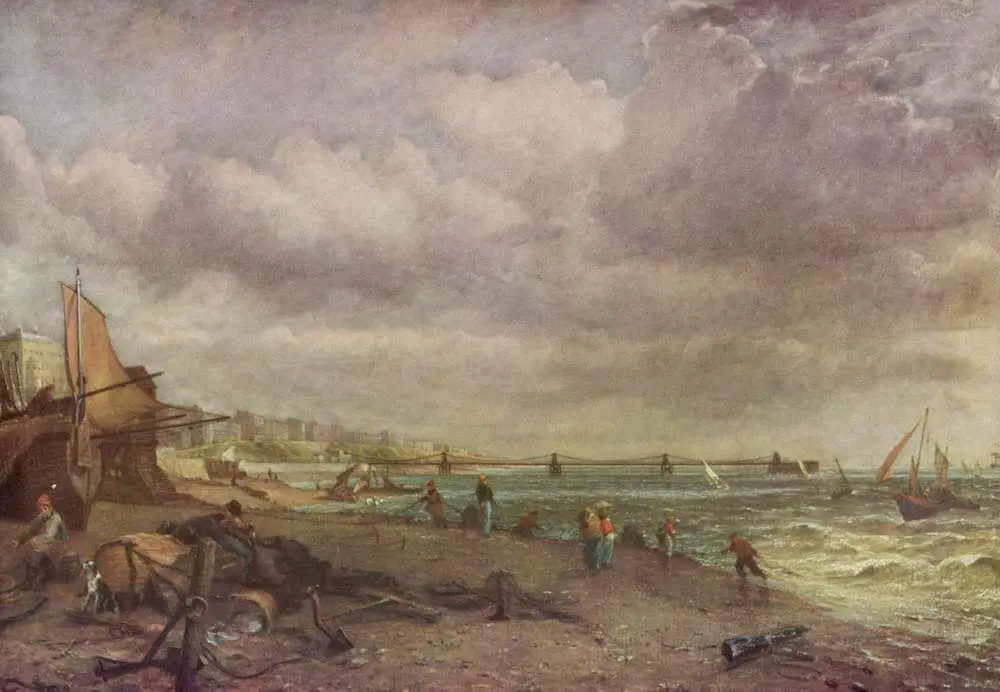
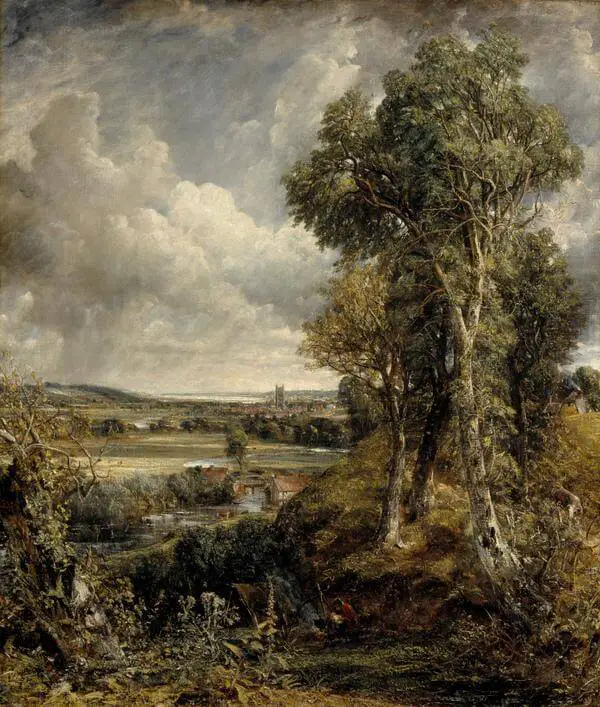
His notable paintings included Chain Pier, Brighton (1826-27), and Dedham Vale (1828).
In 1829 he was elected to become a Royal Academician, a post many felt was belated because he was such a famous art personality. Unfortunately, this honor was soured when Maria died in 1828 and left him and his seven children.
John Constable – His Final Years Of Depression
Constable’s letters and writings in the 1830s show how he felt depressed and alienated. At the time, acute attacks were being made against him and his contemporaries.

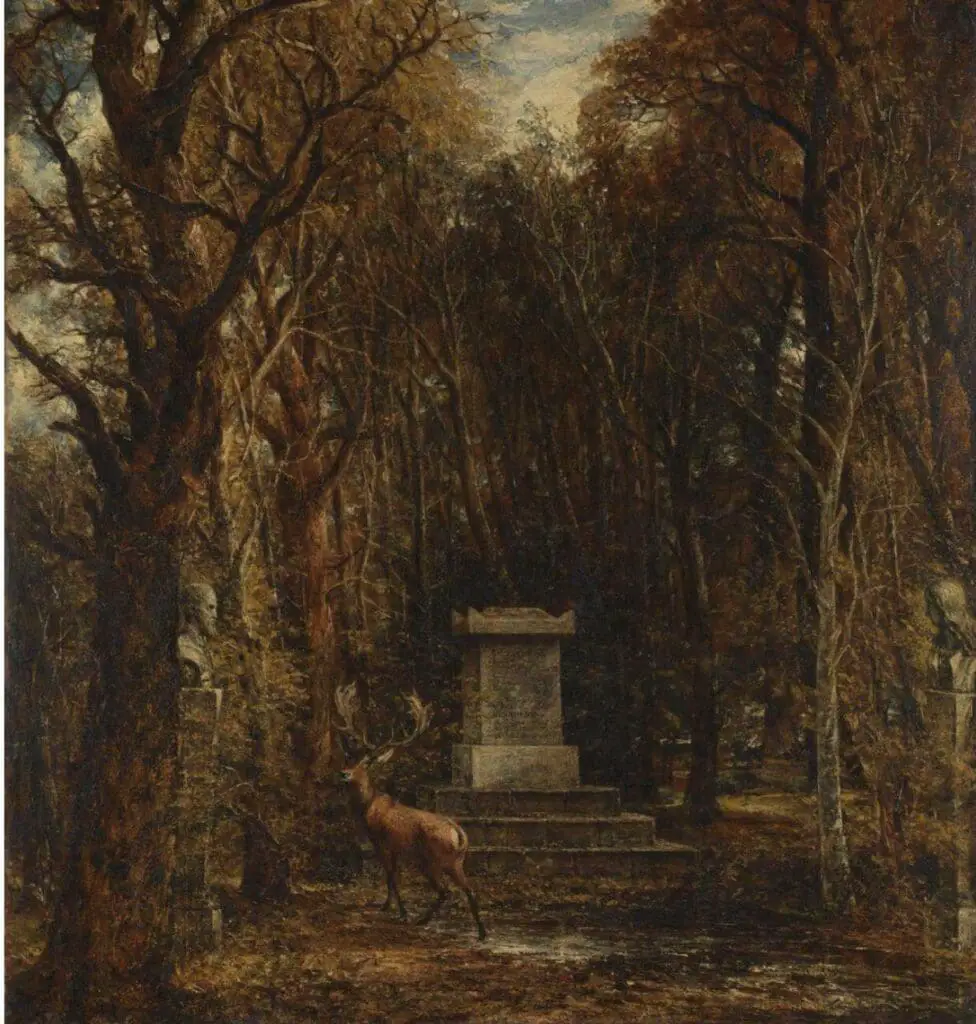
Yet, despite all of these personal struggles during this. He produced some fantastic works of art. He reverted from oil to watercolor and drawing. He produced such fascinating works of art at Salisbury Cathedral From The Meadows (1831). His last Royal Academy enters entitled Cenotaph To The Memory of Coleroton Hall, Leicestershire, by the Late Sir George Beaumont (1836).
John Constable is a significant British painter, primarily a landscape painter. He was also unique in that he did not choose to paint popular places but instead painted areas where he and his family had personal connections.
And while other artists during this period also did painting of the skies, no one did it as extensively as Constable. That is why, even today, he is so well known for his paintings of nature, particularly those that feature the story skies and clouds.
We know that he continues to be an essential British landscape artist. This is also why John Constable is one of my all-time favorite British artists.
Listen To Our Podcast About Brushstrokes of Nature: Exploring John Constable’s Timeless Landscapes
Below or By clicking here.
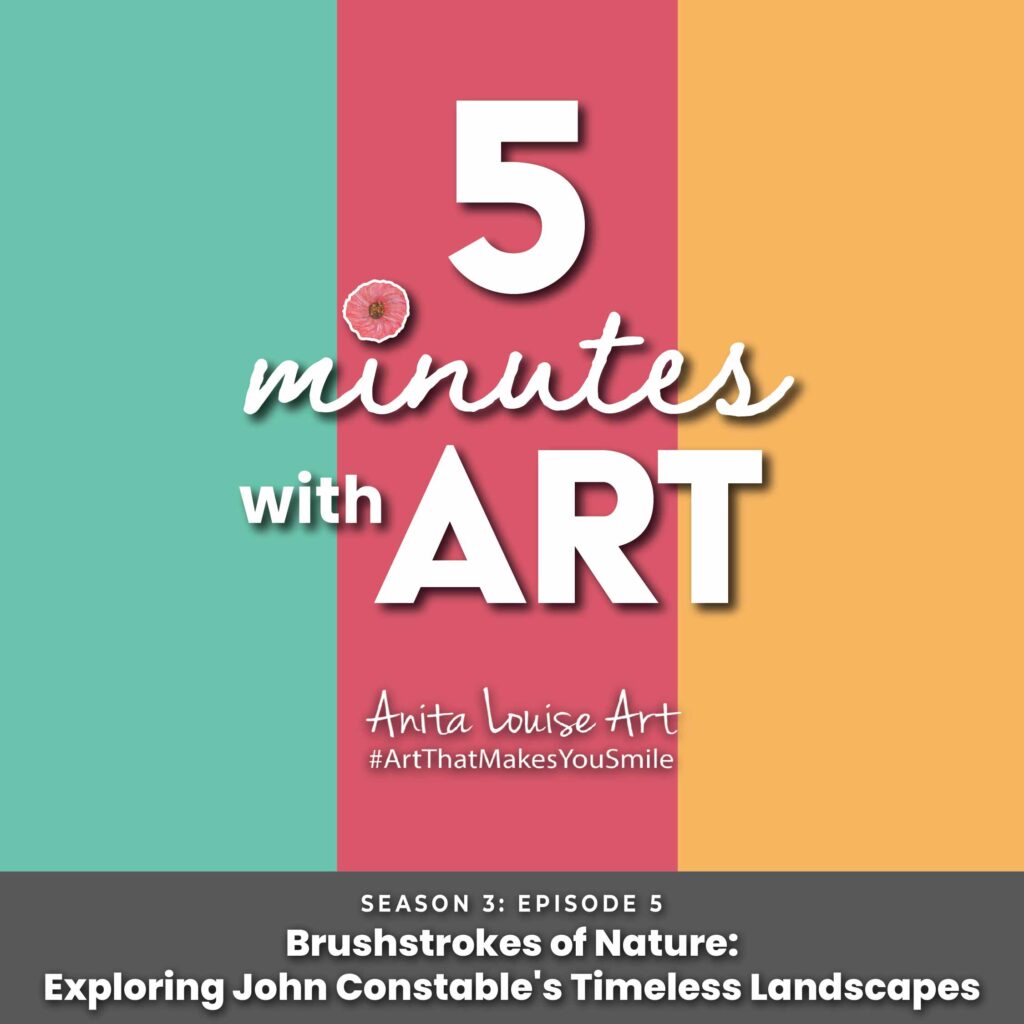
Anita Louise Art is dedicated to art education, great artists, and inspiring others to find and create their art. We love art that uplifts and inspires. #ArtToMakeYouSmile! #ArtToMakeYouHappy!
If you are interested to see any of my art, you can find out more by clicking here. If you are interested in what inspires me and my paintings, you can discover more by clicking here.
We have a free newsletter and would love you to be part of our community; you can subscribe to the newsletter by clicking here. If you have any questions, I would be happy to talk to you anytime. You can reach me, Anita, by clicking here.
Subscribe to our Anita Louise Art YouTube Channel with great videos and information by clicking here.
Join us for our podcast “5 Minutes With Art.” Spend just 5 minutes a week with us to discover and learn about great art and artists. You can find out more about our podcast by clicking here.
Frequently Asked Questions
Who is John Constable, and why is he important in the world of art?
John Constable was a prominent 19th Century British painter celebrated for his landscape paintings, particularly his emphasis on capturing the beauty of clouds and skies. His significance lies in his profound impact on the art world, leaving a lasting legacy as a highly influential British artist.
What is John Constable best known for in his paintings?
Constable is best known for his depictions of the English countryside, showcasing landscapes and scenes from areas he visited or lived in. His mastery in capturing the essence of nature, with a special focus on clouds and skies, distinguishes him as a key figure in landscape painting.
How did John Constable achieve success during his lifetime?
Despite facing challenges, Constable achieved moderate success during his lifetime. His dedication to portraying the British countryside with a unique emphasis on natural elements, along with his distinctive style, garnered attention and acclaim from art enthusiasts and critics.
What makes Constable’s paintings of the British countryside unique?
Constable’s paintings stand out for their unique ability to convey the beauty of the British countryside in a realistic and emotive manner. His attention to detail, especially in capturing the play of light and the ever-changing skies, sets his work apart.
Can you provide examples of specific locations that inspired Constable’s paintings?
Constable often painted landscapes from areas he visited or had personal connections to. Some notable locations include Dedham Vale and Flatford Mill in Suffolk, where he spent much of his early life, and Hampstead Heath, where he later resided.
How did Constable approach the depiction of clouds and skies in his paintings?
Constable’s unique approach to portraying clouds and skies involved careful observation of nature. He believed in capturing the ever-changing and dynamic qualities of the sky, contributing to the atmospheric realism that became a hallmark of his work.
Is John Constable still considered influential in the contemporary art scene?
Yes, John Constable’s influence persists in the contemporary art scene. His contributions to landscape painting and his dedication to capturing the essence of nature continue to inspire artists and resonate with those who appreciate the beauty of the natural world.
What challenges did John Constable face in his artistic career?
Constable faced challenges such as financial struggles and initial resistance from traditional art institutions. Despite these obstacles, his persistence and commitment to his unique artistic vision ultimately led to recognition and success.
Related Questions
Immersive Van Gogh Exhibit – Taking Photos And Other Tips
Before we entered the Immersive van Gogh Exhibit, the girl checking our ticket told us that photos were allowed and encouraged, but she added that flash photography was not allowed. While at the exhibit, I took a lot of pictures and saw a lot of other people also taking photos.
By clicking here, you can discover more by reading Immersive Van Gogh Exhibit – Taking Photos And Other Tips.
Similarities Between Claude Debussy And Claude Monet
Claude Debussy is a musical composer. Claude Monet is an artist. They are both considered Impressionists and were not afraid to break from the tradition of their day to create something new. Both Debussy and Monet greatly influenced many artists that went after them.
By clicking here, you can learn more by reading Similarities Of Claude Debussy And Claude Monet.
What Are Some Japanese Woodblock Print Characteristics?
There are many characteristics of a Japanese woodblock print, from the woodblock print title, artist name, and publisher’s seal; other features also include the color and subject matter. Japanese woodblock prints also have different artistic art movements.
By clicking here, you can learn more by reading What Are Some Japanese Woodblock Print Characteristics?.

